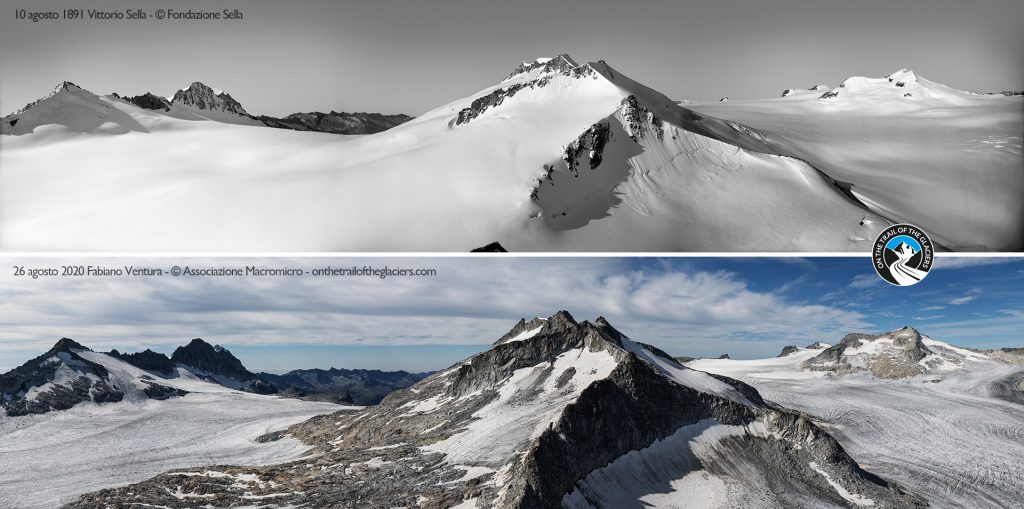April: Adamello Glacier
With a surface area of 17 km2 and an estimated volume of 2 km3, the Adamello Glacier, located on the border of the regions Lombardy and Trentino, is the biggest of its kind in the Italian Alps. It comprises six units, i.e. Pian di Neve Plateau, Miller Superiore, Salarno, Adamé, Corno di Salarno, Mandrone, which together represent 1/4 of Lombardy’s glacier area and extends several hundred meters in altitude (2530 m – 3440 m a.s.l.) with an estimated maximum ice thickness of 260 m.
In recent years it has lost much of its area and ice mass due to increasing air temperatures, surface albedo feedback loops and a decrease in snowfall that could slow down its melting. Snow melt onset has shifted from mid-May to mid-April and no ice accumulation has been recorded in the last two decades. Since the Little Ice Age (14th – 19th century), the retreat of the Adamello glacier ice sheet is estimated to be 2.1 km in length and 900 m in height.
The comparative pictures show the glacier in August 1891/2020 and are courtesy of the On the Trail of the Glaciers project, promoted by the non-profit association Macromicro.

| Glaciers are shrinking in size and mass worldwide. This is a story about one of these glaciers: the Adamello Glacier in the Italian Alps. It explores an intimate visit to this ice giant and reflects on its fate of melting and contamination. While doing so, it also contemplates on how we as a human community may change our relation to the glaciers of this world and what it would mean if we gave them a space in our hearts in addition to our minds. This project was realized as part of the Master’s Degree of Environmental Humanities at the Ca’ Foscari University of Venice. Click on the link below to read “On the Death of a Glacier” Author: Tim Jonay Gutsche |